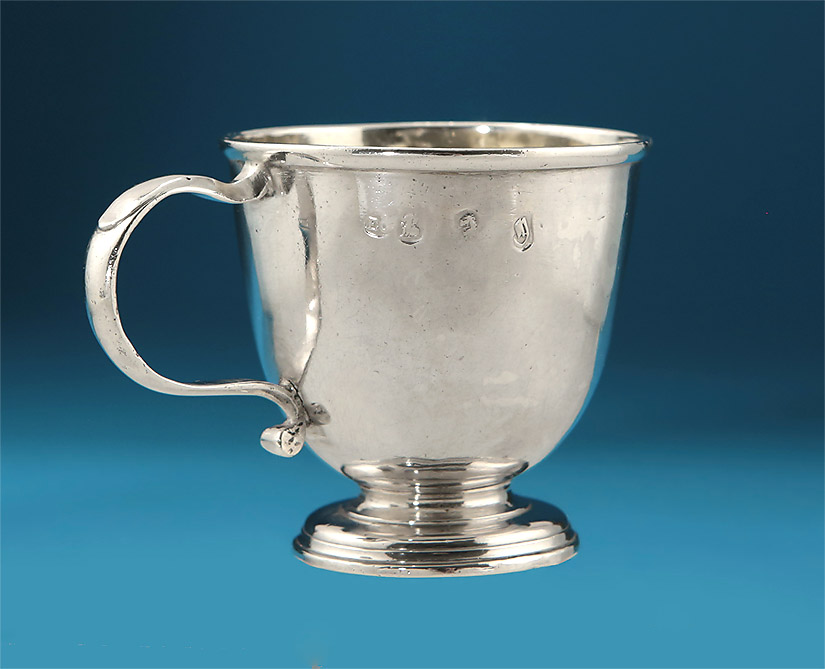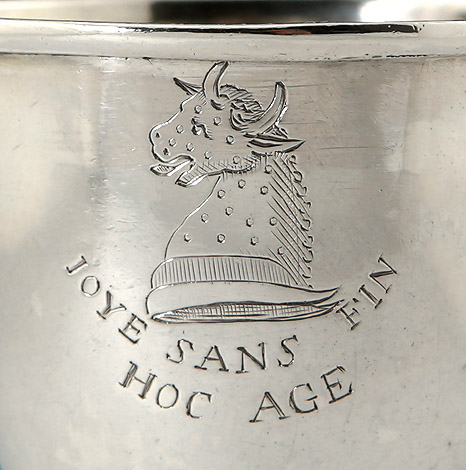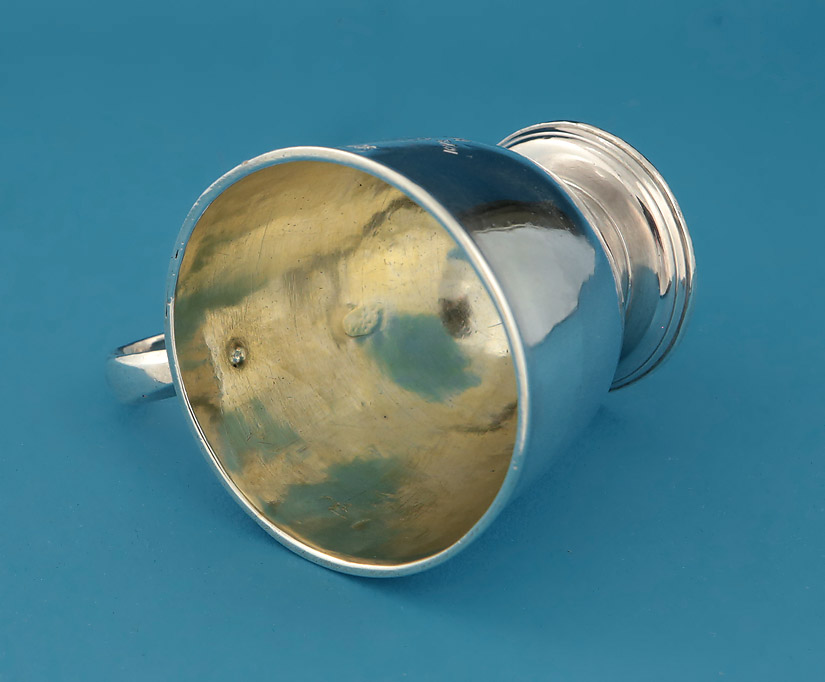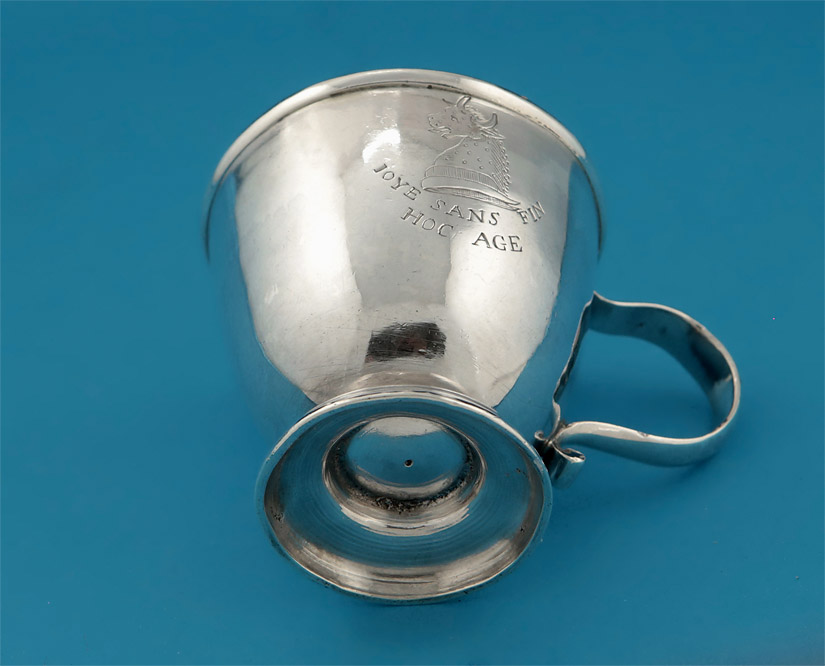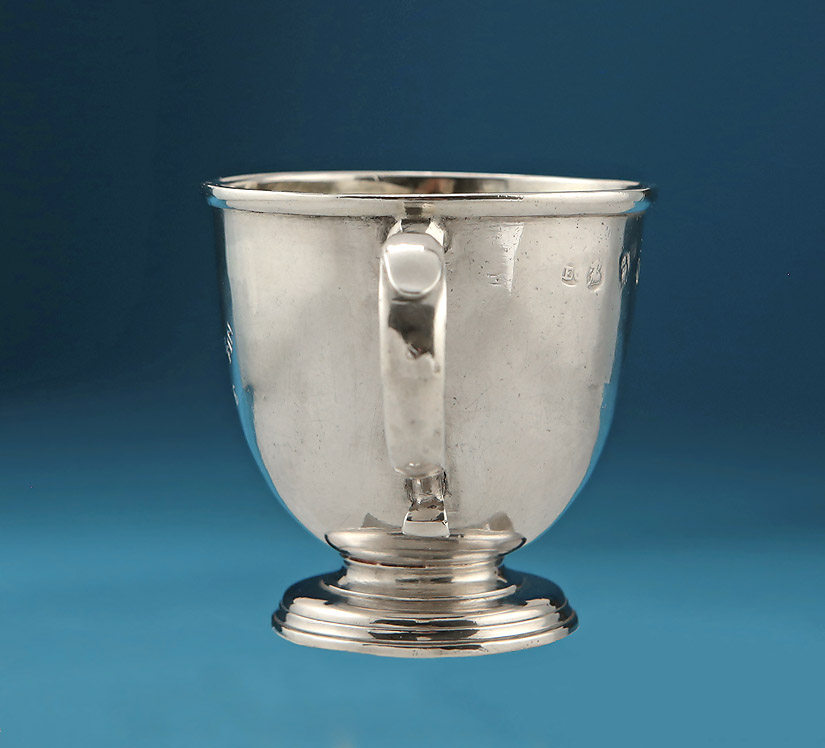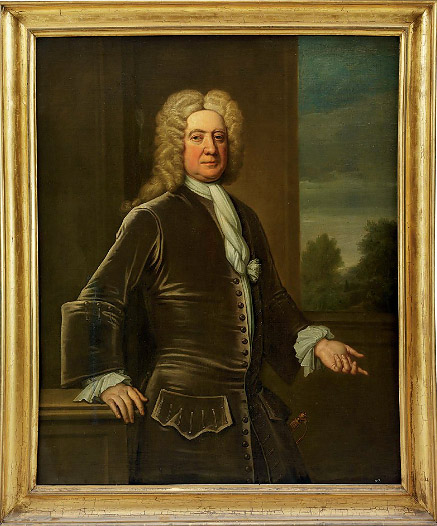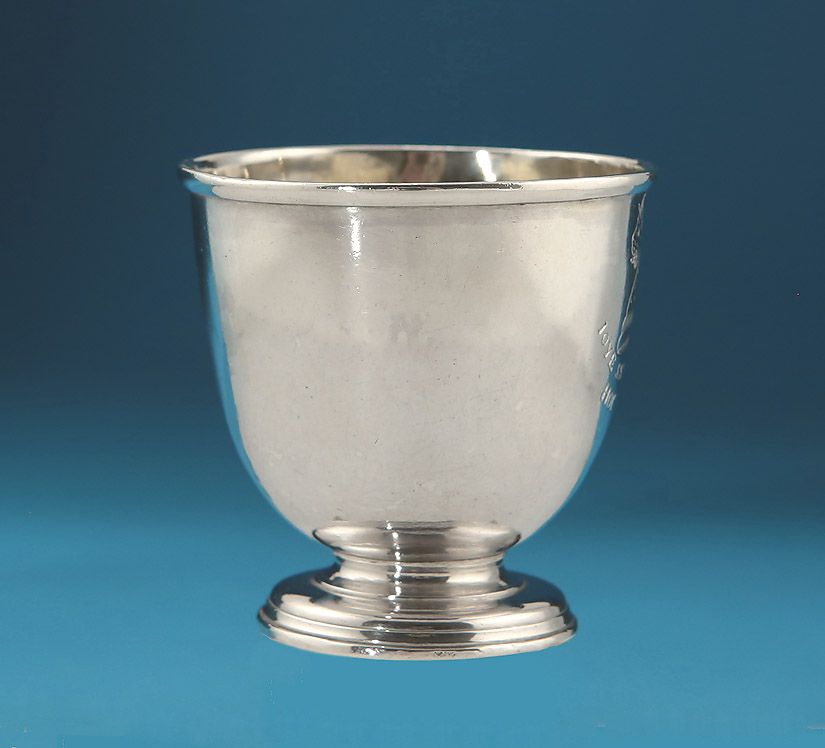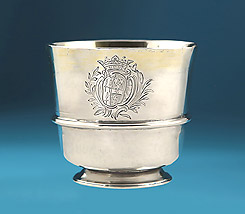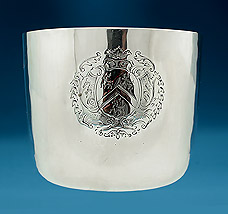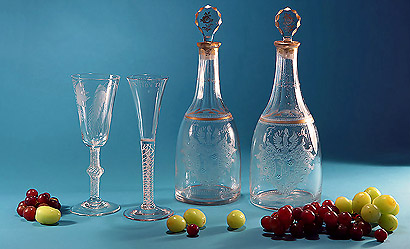Of heavy gauge silver, the small cup with folded rim and
loop handle above a spreading reeded foot,
one side crested
:
on a chapeau gules, turned up ermine* a bull's head
couped sable spotted argent (Baron
Widdrington)
above the mottoes :
Joye sans fin (Joy to the End)
Hoc age (Do this)
*The engraver appears to have omitted the "ermine tails"
Baron William Widdrington, 4th
Baron of Widdrington (1678-1743)
Given the date of manufacture of this
tot cup, it was undoubtedly in the possession of a member of
the Widdrington family,
chief amongst whom was William
Widdrington (born 1678 died 17th April 1743),
the 4th Baron Widdrington and 4th
Baronet (of the 1642 creation) and his brothers, Charles and
Peregrine.
The Widdringtons were an ancient
Northumbrian family, who during the Civil War raised
a
considerable force of men to fight for the Royal cause against the Parliamentarians.
The family's fortunes fell into
ruins when William, the 4th Baron and his brothers supported the Jacobite
Bonnie Prince Charlie in the
Rebellion of 1715 which attempted to restore the House of
Stuart
to the thrones of England, Scotland
and Ireland.
William and his brothers were captured
and made prisoners after the Battle of Preston in England's
north-west,
and were subsequently tried and
convicted of high treason and condemned to death on the 7th July 1716.
Fortunately for William and his brothers, the next year they
received a Royal pardon -
although
the family's peerage, baronetcy and estates were forfeited
to the Crown. (See more below).
Provenance : Upon
Request
Note :
Tot cups are small drinking
vessels, sometimes with a single handle (as above),
or
handleless, in beaker form.
They are usually footed and
dram size (about two inches).
Tot cups are said to be
predecessors of the later Georgian 'stirrup cups' -
so
popular in both silver and ceramic from the mid-18th century forward.
Tot cups, like stirrup cups, were likely
handed to riders before or after a hunt,
and meant to be
drunk without putting the vessel down.
Condition : Excellent, with rubbing to
the right side of the maker's mark C;
handle possible reattached at upper
juncture
2-3/8" High / 2.7 oz.
SOLD
PRICE : Please Inquire
#6866
|

